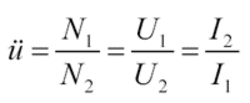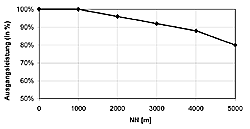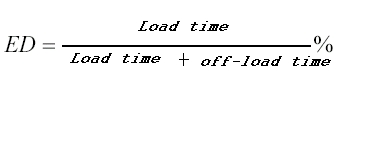Transport damage
What is the protocol for transport damage?
Check the goods for damage when delivered. Document any damage to the packaging and/or goods and make a note of it on the transport documents. If the goods are delivered by a parcel service (e.g. DPD or TNT), mark “defective” on the visual display device itself and sign next to it.
If your goods have been damaged in transit, please inform us immediately. We need the following information and documents for a quick processing:
- Transport documents with respective note of damage and confirmation by the driver (if it was parcel service, there is no need for confirmation from the driver)
- Information about the goods in question (Copy of delivery note)
- Exact documentation of the damage (Photos of the packaging MANDATORY.)
- Information whether you have accepted or rejected the delivery of the goods and whether the goods have remained with the carrier (or whether the driver has taken them back)
Obvious transport damage
Examples:
DPD delivers a torn or badly damaged carton or
The pallet box is badly damaged, torn or deformed
You can see that something has been stacked on the carton (despite the warning sticker denoting that it is forbidden)
The strapping is torn, the goods in the pallet are torn from the pallet box’s wood
What is the protocol:
Document the type of damage (e.g. defective packaging, dented housing, …) on the delivery papers of the freight forwarder/carrier and have the driver confirm this by signature. If the driver refuses to sign, make a note of this as well: The driver refused to sign.
Hidden transport damage
Example:
Carton or pallet is not exactly damaged on the outside, but the goods reveal to have been damaged after opening.
What is the protocol?
Document your reporting in a comprehensible manner and in full. (Photos of the outer and inner packaging and of the goods in the packaging, photos of the damaged goods, detailed description of the damage etc.) Any hidden transport damage must be reported to us within 5 working days of delivery. (Contact details stated below) After the given period is over, the freight forwarder and their insurance companies assume that the goods have been accepted undamaged. The damage can then no longer be settled via the insurance company-
General information:
Please check the delivery conditions (Incoterms) before you report any transport damage to us. If the shipment is to be delivered via EXW or FCA, you bear the costs and must be responsible for any transport damage incurred. If the shipment is to be delivered via DAP, we assume the responsibility for the handling.
In the event of minor damage (e.g. breakage of a clamp, etc.) we can help you out quickly and without any hassles of red tape as we do not have to take the long way of insurance.
Where do I report transport damage:
Christoph Hammermüller: versand@trafomodern.com, Tel. +43 2689 2744 26
Petra Schmidt: petra.schmidt@trafomodern.com, Tel: +43 2689 2744 14 or +43 676 843 195 160
Please do not hesitate to call us if you have any questions!
TERMS AND DEFINITIONS
Compliance with the relevant standards goes without saying for trafomodern, testing of devices produced by other manufacturers have however revealed that this does not apply to all of our competitors. In the following you will find an explanation for some terms and definitions.
Rated Values:
Nominal values are always rated values. Rated values are rated voltage, rated current (rms values), rated output, rated frequency and rated turns ratio. Together these values uniquely define a transformer.
Rated Input Voltage (Nominal Input Voltage):
The supply voltage (in the event of three-phase systems between the outer conductors), assigned to a transformer under defined operating conditions.
Rated Frequency (Nominal Frequency):
The frequency assigned to a transformer under defined operating conditions.
Rated Output Current (Nominal Output Current):
The output current at rated input voltage and rated frequency, assigned to the transformer for the set operational conditions.
Rated Output Voltage (Nominal Output Voltage):
The output voltage (for three phase systems between the outer conductors) at rated input voltage, rated output current and rated power factor (normally power factor cos f = 1), assigned to the transformer for the set operational conditions.
Rated Power (Nominal Power):
The product of the rated output voltage and the rated output current, for three-phase systems multiplied by v3.
Power Factor cos f:
Power Factor cos f indicates the ratio of apparent power (U*I) being available as active power with sinusoidal variables. In ideal systems there is an angle of exactly 90 degree between current and voltage, there active power is therefore 0 and the reactive power is the same as the apparent power. However in reality the angle is a little bit smaller than 90 degree, hence there will be always a small part of active power (=power loss), which might be very small but still there.
Rated Ambient Conditions ta:
The highest temperature at which a transformer can be used in accordance with the prevailing operating conditions for continuous operation.
No-load Output (= No Load Losses = Core Losses):
The input power of the off-load transformer at rated input voltage and rated frequency.
Short-circuit Losses (= Copper Losses):
Active input power, when the output side of the transformer is short-circuited and the rated (nominal) output current is flowing.
Short-time Rating:
The short-time rating is the output at the secondary side of a control transformer with cos f= 0,5 and a maximum voltage drop of 5% vs. the rated (nominal) output voltage.
No-load Output Voltage:
The output voltage of an unloaded transformer at rated input voltage and rated frequency.
No-load Current:
The current at the input side of an unloaded transformer at rated (nominal) input voltage and rated frequency.
Short-circuit Voltage uk:
The voltage to be applied to the input winding in order to obtain the same current as the rated output current while the output winding is short-circuited and the windings are at ambient temperature. The value is given as a percentage of the primary rated input voltage. The uk is almost in correlation with the no-load-behaviour of the transformer.
ABC OF TRANSFORMERS
1. Definitions (in compliance with EN61558-1)
Short-circuit Proof Transformer:
Transformer where the temperature does not exceed established limit values when overloaded or short-circuited, and which continues to meet all requirements of EN 61558 once the overload or the short circuit have been removed.
Conditionally Short-circuit Proof Transformer:
Short-circuit proof transformer equipped with a protective installation, which opens the input or output circuit or reduces the current in the input or output circuit when the transformer is overloaded or short-circuited, and which continues to meet all requirements of EN61558 after removal of the overload or the short-circuit and the replacement or resetting of the protective installation.
Examples of protective installations are:
Fuses, overload release relays, thermal links, a thermal fuse link, temperature limiters, PTC resistors and automatically triggered mechanical protection switches.In the event of the protective release through a protective installation that cannot be replaced or reset, this does not mean that the transformer will continue to operate.
Unconditionally Short-circuit Proof Transformer:
Short-circuit proof transformer without protective installation where, because of the design, the temperature will not exceed established limit values in the event of overload or short-circuit and which continues to operate and meet all requirements of EN61558 after the removal of the overload or the short-circuit.
Non Short-circuit Proof Transformer:
Transformer intended to be protected against excessive temperature by a protective installation which is not part of the transformer, and which continues to meet all requirements of EN 61558 once the overload or the short-circuit has been removed.
Fail-safe Transformer:
A transformer that is permanently disabled through an interruption of the input power circuit if used contrary to what was intended, but which does not constitute any danger to the user and the environment.
ELV (Low Voltage):
Voltage that does not exceed the upper limit value of the voltage range 1 (refer EN60449).
SELV:
Voltage, that does not exceed the 50V AC voltage or 120V smoothed DC voltage between the conductors or between a conductor and earth in a circuit isolated form the supply , e.g. by means of a safety transformer.
SELV circuit:
ELV circuit designed with protective isolation against other circuits, which does not have any connections for earthing the exposed conductive components.
PELV circuit:
ELV circuit designed with protective installation against other circuits, which may be earth-connected for operating reasons and/or the exposed conductive parts may be earth-connected.
FELV Circuit:
ELV circuit where the ELV voltage is present for operating reasons and does not comply with the requirements on SELV or PELV.
2. Fundamentals
 |
General circuit diagram:
N1 : Number of input windings |
The ratio of primary to secondary number of windings. It represents the ratio of the voltages and currents of a transformer.
 Power (P):
Power (P):Active power with sinusoidal variables:


The rated power (SN)
a transformer is specified as apparent power:


Autotransformers:
The rated power (core power) of an autotransformer depends on the throughput power and the turns ratio:

U1: smaller voltage
U2: greater voltage
SN: rated power
Units employed
U Volt
I Ampere
P Watt
S Volt-Ampere
N Windings
3. Operation
Ambient Temperature:
The ambient temperature of the transformer at rated power must not exceed the rated ambient temperature specified on the rating plate (the transformer can be operated temporarily at a maximum temperature of 10°C over ta ).
If the rated ambient temperature is continuously exceeded, the rated power must be reduced:
| Ta/°C | Isol. B | Isol. F |
| 40 | 100% | 100% |
| 50 | 95% | 96% |
| 60 | 89% | 91% |
| 70 | 84% | 81% |

Duty Cycle:
The specified rated power refers to the operating mode S1 (continuous operation). If operated in a sequence of established identical cycles (intermittent operation) a transformer with smaller rated power can be employed in many cases.
The duty cycle (DC) of the transformer is calculated as follows:
In order to avoid impermissible heating, the cycle duration (load time + off-load time) is limited to 10 minutes. With the help of the factor F it is possible to calculate the rated power of the transformer:
| DC/% | 100 | 80 | 70 | 60 | 50 | 40 | 30 | 20 |
| F | 1,0 | 0,89 | 0,85 | 0,77 | 0,70 | 0,63 | 0,55 | 0,45 |
Installation Altitude:
deviates from this altitude, the rated power must be reduced:
| Attitude /m | SN/% |
| 1000 | 100% |
| 2000 | 98% |
| 3000 | 94% |
| 4000 | 88% |
| 5000 | 80% |

Degree of Protection:
The degree of protection is identified by 2 code figures. The first code figure describes the protection against direct contact and the entering of solid foreign bodies, the second code figure describes the protection against the entry of water (refer to IEC60529).
Specifying the type of protection e.g.:
IP 2 3
2= first code figure
3= second code figure
Popular degrees of protection are:
| IP00 | Not protected |
| IP23 | Protected against contact with the fingers, protected against the entry of solid foreign bodies greater than 12mm. Protected against spray water falling at an angle of up to 60° to the vertical. |
| IP54 | Complete protection against contact of life or internal moving parts. Water, impinging on the housing from any direction must not have a harmful effect. |
Description of all degrees of protection:
|
First coder figure
|
Designation
|
Explanation
|
|
0
|
Not protected
|
|
|
1
|
Protection against solid foreign bodies 50mm diameter and larger The object probe, ball 50mm diameter, must not enter fully.
|
|
|
2
|
Protection against solid foreign bodies 12.5mm diameter and larger
|
The object probe, ball 12.5mm diameter, must not enter fully. The articulated test finger may enter up to its length of 80mm; adequate distance must be maintained however.
|
|
3
|
Protection against solid foreign bodies 2.5mm diameter and larger
|
The object probe, ball 2.5mm diameter, must not enter at all.
|
|
4
|
Protection against solid foreign bodies 1mm diameter and larger
|
The object probe, ball 1.0mm diameter, must not enter at all.
|
|
5
|
Protection against dust deposits
|
The entry of dust is not fully prevented, but dust must not enter in quantities, which impair the satisfactory operating of the safety of the unit.
|
|
6
|
Protection against the entry of dust.
|
No entry of dust at an ambient pressure of 20mbar in the housing.
|
|
Second code figure
|
Designation
|
Explanation
|
|
0
|
Not protected
|
|
|
1
|
Protection against drip water
|
Vertically falling drops must not have any harmful effect.
|
|
2
|
Protection against drip water when housing is inclined up to 15%
|
Vertically falling drops must not have any harmful effect. When the housing is inclined by an angel of up to 15° to both sides of the vertical.
|
|
3
|
Protection against spray water
|
Water sprayed at an angle of up to 60° on both sides of the vertical must not have any harmful effect.
|
|
4
|
Protection against splash water
|
Water impinging on the housing from any direction must not have any harmful effect.
|
|
5
|
Protection against water jet
|
Water jets form any direction against the housing must not have any harmful effect.
|
|
6
|
Protection against intense water jet
|
An intense water jet directed against the housing from any direction must not have any harmful effect.
|
|
7
|
Protection against the effect of temporary submersion in water
|
Water must not enter in a quantity that would result in harmful effects if the housing is temporarily submerged in water under standardised conditions of pressure and time.
|
|
8
|
Protection against the effect of permanent submersion in water
|
Water must not enter in a quantity resulting in harmful effects, if the housing is permanently submerged in water that have to be agreed between manufacturer and user. However, the conditions must be more difficult than figure 7.
|
4. Types of transformers
Mains Transformer (EN61558-2-1):
Transformers for all applications where double or reinforced insulations between input and output current is not required.
Power range:
• 1kVA single-phase
• 5kVA three-phase
Control Transformer (EN61558-2-2):
Transformers for applications where inductive loads with low voltage drop have to be switched on the transformer, but double or reinforced insulation between input and output circuits is not required.
DIN EN 60 204 Part 1/6.93 systematically specifies transformers for the supply of control circuits.
Exceptions:
- Machines with a rated power of less than 3 kW, with a single motor starter and a maximum of two external control units (e.g.: interlocking device, emergency-off push button).
- Household appliances and similar machines where the electrical equipment is located within the appliance housing.
Power range: no limitation
In accordance with EN60 204 the control circuits must be galvanically separated from the mains circuit. The only exceptions are small simple units with no more than two power units (e.g.: motor starter).
Advantages provided when using a control transformer:
- Possibility to select between earthed or unearthed operation
- Low voltage drop in the case of switching inductive loads
- Possibility to correct main voltage by means of tapping
- Possible standardization of driving voltage (same parts for switching units, inventory)
- Dampening of wire line interferences of the mains circuit
- Limitation of short-circuit current in the control circuit
- Simpler voltage and insulation testing
Generally, motor protective circuit breakers are used to protect the control transformer. The rating specifications of the protective switch are stated on the rating plate.
To avoid problems when switching on the transformer (inrush current) adequate motor protective circuit breakers especially designed for protecting transformers should be used. Contrary to traditional motor protective circuit breakers they are fitted with a magnetic trigger with a higher breaking current. These kinds of circuit breakers are provided by various motor protective circuit breakers manufacturers (e.g.: Moeller PKZM0-T).
Advantages of motor protective circuit breakers:
- Thermal protection of the transformer
- No replacement of elements (e.g. fuses for feeble currents)
- All poles disconnected in the event of earth faults
Wiring examples:
Earthed operation Un-earthed operation with
insulation monitoring
.
” title=””>
Disconnecting Transformer (EN61558-2-4):
Transformers for applications where increased requirements such as double or reinforced insulation between the circuits is demanded by the erection regulations or the equipment regulations.
Power range:
- 25kVA single-phase
- 40kVA three-phase
Greater rated power values can also be agreed between customer and manufacturer.
Application:
- Protective measure protective low voltage
Safety Transformer (EN61558-2-6):
Transformers for applications where increased requirements such as double or reinforced insulation between the circuits is demanded by the erection regulations or the equipment regulations and the no load output voltage and the rated output voltage do not exceed 50V AC or 120V smoothed DC voltage.
A safety transformer can be used for instance to realise a SELV circuit.
Power range:
- 10kVA single-phase
- 16kVA three-phase
Greater rated power values can also be agreed between customer and manufacturer.
Autotransformer (EN61558-2-13):
Transformers for applications where no electrical disconnection between input and output currents is required.
Depending on the ratio of input voltage to output voltage, autotransformers are clearly smaller in size compared with transformers with separate windings. Application for instance the supply of machines with deviating mains voltage.
Power range:
- 20kVA single phase (with maximum core power 1kVA)
- 100kVA three phase (with maximum core power 5kVA)
Greater rated power values can also be agreed between customer and manufacturer.
Transformers for usage in Medical environments (EN61558-2-15):
Disconnecting transformers with double or reinforced insulation and additional requirements for the supply of IT systems for usage in medical environments according to VDE0100-710.
- The shieling between input and output winding to connection
- Neutral point connected to connection terminal or centre tap with single-phase transformers in the output winding for connecting an insulation control.
- Rated output voltage maximum 250V (with three-phase transformers between the outer conductors)
- Switched on current maximum 12times rated current
- No-load current maximum 3% of rated current
- Short-circuit voltage uk max. 3%
- “”Single-phase transformers must be suitable for the establishment of the IT-system. The rated output power must not be less than 3.15kVA and not greater than 8kVA” “
- “”Single-phase transformers must be suitable for the establishment of the IT-system. The rated output power must not be less than 3.15kVA and not greater than 8kVA” “
Can be realised through the integrated thermostat (switch or PTC relay).
Power range: 3kVA to 10kVA


